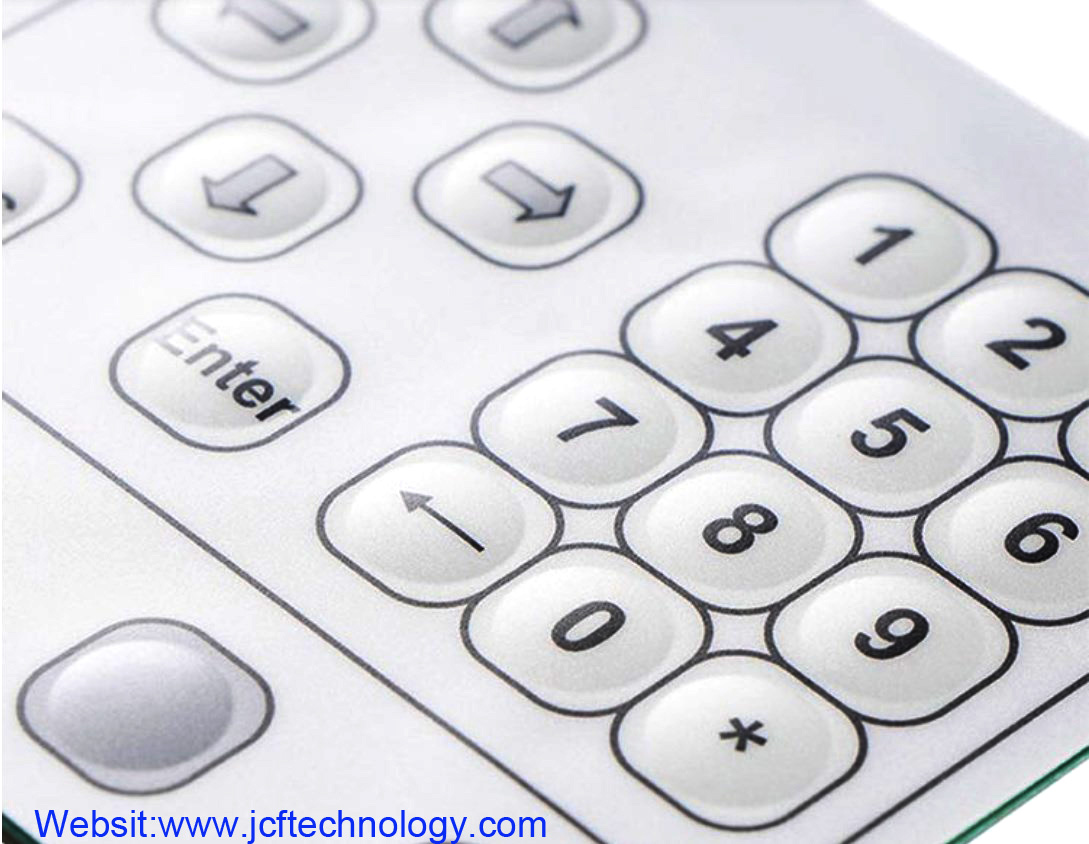
 Tel: +86755-27523807 +8613715205860(wechat/whatsapp)
Tel: +86755-27523807 +8613715205860(wechat/whatsapp) Email: jcf@jcftechnology.com
Email: jcf@jcftechnology.com

 Tel: +86755-27523807 +8613715205860(wechat/whatsapp)
Tel: +86755-27523807 +8613715205860(wechat/whatsapp) Email: jcf@jcftechnology.com
Email: jcf@jcftechnology.com
Embossing the membrane faceplate uses special tools to create raised areas on the faceplate. The embossing can be decorative, (like an embossed logo or border) and /or functional, as on a keypad.
Pillow embossing creates a raised area over the entire key or button. It lets the user “feel” the keypad. Tactile embossing, creates a raised dome area and gives the key a “click” feel when it is depressed. We describe this “click” as tactile feedback. Rim embossing creates a raised perimeter around the keypad.
Polycarbonate has become the material of choice in non-tactile faceplates. It is durable, easily embossed, and available is several popular textures. Polycarbonate has very good resistance to abrasion, chemicals and solvents. In very high use applications, polyester has better wear characteristics, but its more difficult to emboss. Polyester is also more resistant to chemicals and solvents than polycarbonate.
membrane switch design of the faceplate and the materials it is made from is dictated by your needs and the environment in which the switch will be used. The more we know about the final use of the membrane switch, the better we will be able to make recommendations about material and tolerances.
Tactile membrane keypads “click” when they are pressed. Much like a mechanical bswitch. Tactile requirements affect the look of the entire switch design. We will look at two popular methods for creating a tactile membrane switch.
Tactile feedback is accomplished by adding a dome shape internally in the switch. As the dome is depressed, at a certain point it collapses or snaps down causing the top and bottom circuits to make contact, closing the switch.
The amount of pressure it takes to collapse the dome and activate the switch is the operating force. The operating force can be adjusted to your needs. Typically, the operating force of a tactical switch is 8 to 16 ounces though it can be adjusted from 5 to 20 ounces. The operating force is a function of the dome shape, dome diameter, dome thickness, dome height, dome material, top and bottom circuit layer thick ness, size and shape of the spacer, retainer openings and venting faceplate material and thickness, and faceplate emboss styles. In other words, The entire membrane keyboard must be designed around its tactile requirements.
More information visit:www.jcftechnology.com
